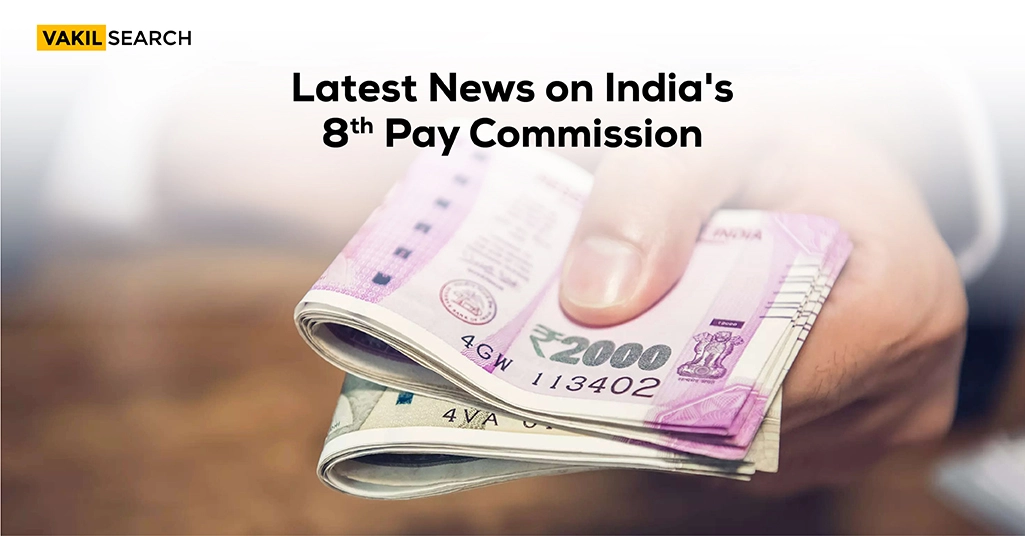8th Pay Commission Proposed Salary Structure, Slabs & Calculation

The 8th Pay Commission is expected to recommend changes to the salary structure, including a new fitment factor that could impact basic pay and allowances. While not yet confirmed, government salaries and pensions may see revisions starting in 2026, aligning with these anticipated updates.
Recent News March 17, 2025 The Centre has confirmed there are no plans to merge Dearness Allowance (DA) with basic pay or pension ahead of the 8th Pay Commission. The preparation of the 8th Pay Commission is ongoing, with key decisions yet to be finalized. January 19, 2025: The 8th Pay Commission will revise salaries and pensions for central government employees, but overly high expectations may lead to disappointment. While approved by the Union Cabinet, its formation might take longer than expected. Staff side NC-JCM suggests a minimum of five promotions and modifications to MACP, ensuring at least three promotions in a 30-year career. January 16, 2025: Recently, the Union Cabinet, led by Indian Prime Minister Narendra Modi, has approved the 8th Pay Commission of India on January 16, 2025 bringing hopeful news for central government employees. With this development, employees can expect a salary hike in the near future. According to experts, the fitment factor, a component of the pay revision, may fall between 2.5 and 2.8 times the basic pay. If confirmed, this could result in a substantial salary increase, with projections suggesting a rise of between ₹40,000 and ₹ 45,000. Furthermore, some discussions are ongoing regarding performance-based pay hikes. These updates are expected to be implemented under the Central Civil Services (Revised Pay) Rules, 2025, and could lead to enhanced pension and other retirement benefits.
How Much Salary Increase is Proposed in the 8th Pay Commission?
The 8th Pay Commission proposes raising the minimum basic pay to ₹51,480, an 186% increase from ₹18,000. Experts suggest a fitment factor between 2.5 and 2.86, with overall pay hikes of 25-30% expected.
Who is Eligible for the 8th Pay Commission?
The 8th Pay Commission is anticipated to impact around 50 lakh central government employees and 65 lakh pensioners. Eligible individuals include:
- Central government employees: This includes individuals working directly for the central government in various departments and ministries.
- Pensioners: Retired central government employees who are receiving pensions.
- Personnel under Central Civil Services: This encompasses a broader range of individuals employed by the central government, including those governed by the Central Civil Services (Revised Pay) Rules, 2025.
Recommendations from the commission are expected to focus on:
- Salary revisions: This may involve increasing basic pay, allowances, and other benefits.
- Pension and retirement benefits: The commission is likely to consider improvements in pension schemes and other retirement benefits for eligible individuals.
Note:
Projected 8th Pay Commission Salary Slabs

What Will Be the 8th Pay Commission Fitment Factor?
The fitment factor for the 8th Pay Commission is a multiplier used to revise salaries and pensions. Experts predict it may range from 2.5 to 2.86. For instance, a fitment factor of 2.5 would increase a basic salary of ₹ 40,000 to ₹1 lakh per month, excluding dearness and other allowances.
Benefits of the 8th Pay Commission
The 8th Pay Commission is expected to bring several benefits to central government employees and pensioners:
- Salary Increase: The proposed fitment factor of 2.86 indicates a substantial increase in basic pay, leading to higher overall salaries.
- Improved Living Standards: The increased salaries will likely boost the purchasing power of government employees, enabling them to afford a better quality of life.
- Enhanced Job Satisfaction: A competitive salary structure can improve job satisfaction and motivation among government employees.
- Attracting Talent: Higher salaries can attract talented individuals to government service, leading to a more efficient and effective workforce.
- Economic Stimulus: The increased spending power of government employees can contribute to economic growth.
- Better Pension and Retirement Benefits: The commission is expected to review and potentially improve pension schemes and other retirement benefits, ensuring financial security for retired employees.
It’s important to note that the specific benefits will depend on the final recommendations of the 8th Pay Commission, which are yet to be determined.
8th Pay Commission Salary Calculation
The 8th Pay Commission is expected to use a fitment factor of 2.86 to calculate new salaries for central government employees and pensioners. Here’s how it works:
Calculation:
- Current Basic Pay: Determine the employee’s current basic pay under the 7th Pay Commission.
- Fitment Factor: Multiply the current basic pay by the fitment factor of 2.86.
- New Basic Pay: The result of this multiplication is the employee’s new basic pay under the 8th Pay Commission.
Sample Calculation:
Let’s assume an employee’s current basic pay under the 7th Pay Commission is ₹50,000.
- New Basic Pay = Current Basic Pay * Fitment Factor
- New Basic Pay = ₹50,000 * 2.86
- New Basic Pay = ₹143,000
Therefore, the employee’s new basic pay under the 8th Pay Commission would be ₹143,000.
Important Note: This is a simplified calculation. The actual salary will also include other allowances and deductions as per government rules.
